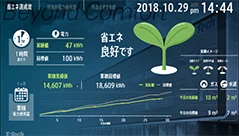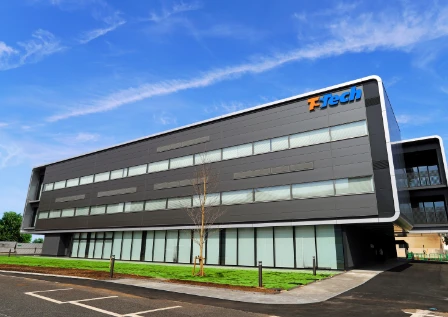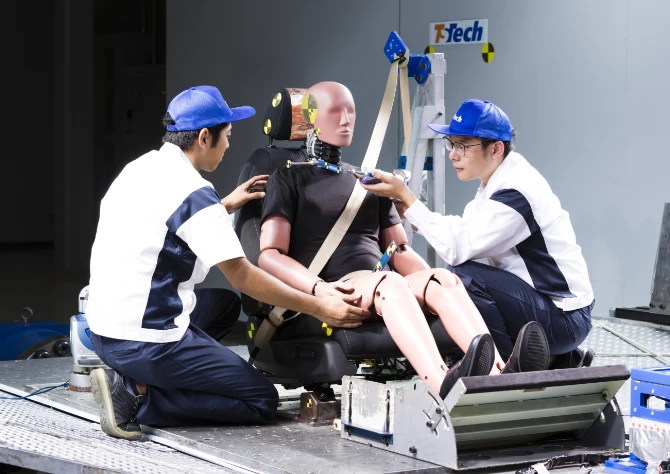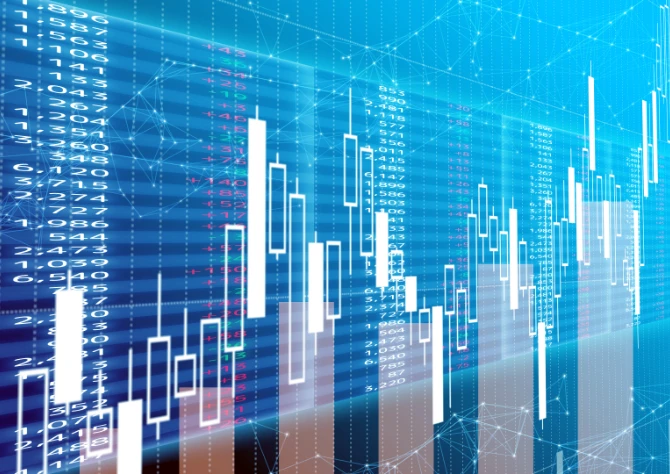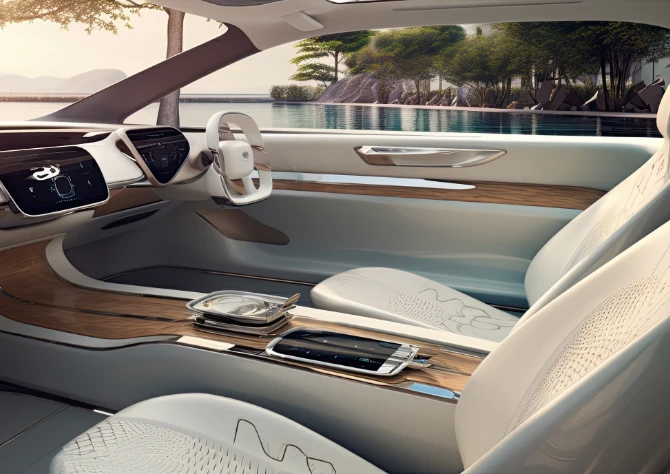Environmentally Friendly, Highly Efficient New Head Office Building
Environmentally Friendly, Highly Efficient New Head Office Building
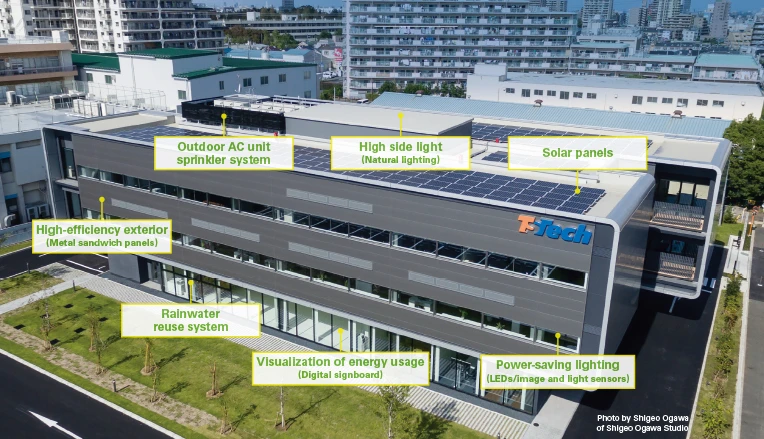
Overview of Head Office Building
TS TECH’s new Head Office building, completed in March 2018, is an environmentally and community-friendly structure that was built based on the ideas of “highly-efficient operations” and “superior hospitality.”
These concepts are manifested primarily in the building’s environmental performance. With an approximately 40% reduction in the amount of electricity purchased compared to the old Head Office building—which was already the focus of energy-saving activities—the new building also incorporates the reuse of rainwater for general service water and more on-site greening. As a result, annual energy consumption was 78% less than ordinary buildings. The new building was certified as an energy-saving building and received a “Nearly ZEB*1” rating under the Building-Housing Energy-efficiency Labeling System (BELS)*2. It cut actual energy consumption levels by 86% in its first year of operation. It also earned the highest ranking of “S” in the Comprehensive Assessment System for Built Environment Efficiency (CASBEE*3), which rates environmental performance.
Additionally, an on-site digital signboard displays the building’s target values and realtime usage information for electricity, gas, and water, encouraging employees to be mindful of saving energy.
-
ZEB (Zero Energy Building): A building that delivers significant energy savings while maintaining the quality of its indoor environment, and is designed to achieve net zero energy consumption through the use of renewable energy.
-
Certification rank
ZEB: A building with zero or negative net annual primary energy consumption- Nearly ZEB: A building that comes as close as possible to ZEB by nearing zero annual primary energy consumption
- ZEB Ready: A building with a ZEB focus that is furnished with energy-saving equipment
-
Certification rank
- Building-Housing Energy-efficiency Labeling System (BELS): A system in which a third-party evaluates and certifies the energy-saving performance of new and existing buildings based on the Ministry of Land, Infrastructure, Transport and Tourism’s guidelines for indicating the energy consumption performance of buildings.
- Comprehensive Assessment System for Built Environment Efficiency (CASBEE): A comprehensive evaluation system for building quality that not only takes into account environmental considerations such as energy conservation and use of materials that have low environmental impact but also indoor comfort and scenery.
Efforts to Reduce Electric Power Consumption
The following is an overview of the Head Office’s major initiatives to reduce power consumption.
Load reduction and higher efficiency
We installed high-performance insulation panels on the building’s exterior, and we designed the size of the building’s apertures to provide both a pleasant view and sufficient daylight, thereby reducing the peak solar radiation load. We used low-emissivity glass with superior heatblocking and heat-insulation properties for the south side of the building to reduce heat load, thereby providing comfort and saving energy. We also installed a sprinkler system (using recycled rainwater) for the outdoor air-conditioning (AC) units to improve cooling efficiency through the effects of latent heat cooling.
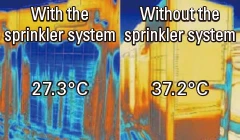
A system for energy-efficient operations
In order to be energy efficient yet accommodate a variety of work styles, including those that make use of our flextime system, we installed a system that uses motion detectors to automatically turn air-conditioning and lighting on or off in specific areas depending on the presence or absence of people. We also use brightness sensors that detect natural light and adjust lighting intensity, thereby creating a system that can automatically conduct energy-saving operations. The natural light entering through the atrium in the center of the building also helps save energy.
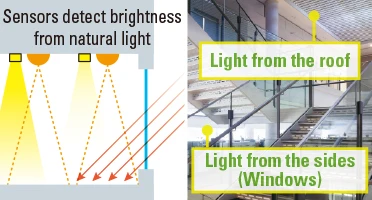
Energy production
We installed 87.9 kW high-efficiency solar panels on the roof to help reduce CO2 emissions, which helps to greatly reduce the amount of electricity purchased.
PDCA
In the year following the completion of the building, our energy management team and members of the Design Department from Takenaka Corporation, which was the designer and builder, held monthly meetings. We analyzed factors behind items that exceeded consumption targets, checking actual measurement data and the building’s usability and convenience. We continued to make and incorporate improvements for each item, such as adjusting on/off schedules for air conditioning and lighting.
Going forward, we will continue to conduct energy-saving initiatives based on the ISO 50001 standard.
Efforts to Reduce the Amount of Water Used
We installed a rainwater reuse system with the aim of reducing tap water usage. Rainfall collected on the roof is retained in an underground rainwater storage tank where it is filtered and sterilized, and then used in toilets, outdoor maintenance, and the outdoor AC unit sprinkler system.
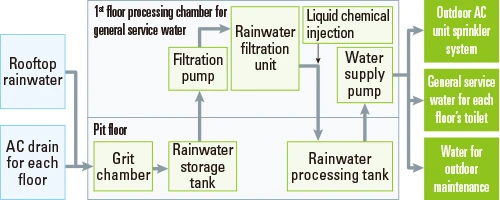
Although we made every effort to reduce water usage at the old Head Office, substantial equipment replacements conducted during the construction of the new building contributed to a 4.7% cut in water usage and a 61.9% decrease in tap water consumption compared to the old building.
Water consumption volume
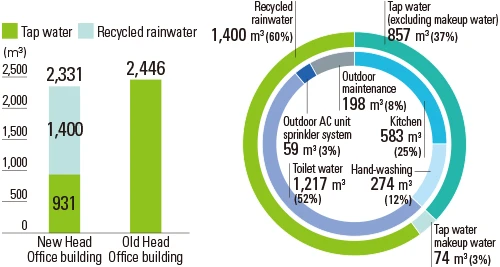
Efforts to Raise Employees’ Energy-Saving Awareness
With the goal of further raising energy-saving awareness among our employees, we display the status of the building’s power, gas, and water usage on a large digital signboard.
To keep personnel aware of current conditions, we also installed “eco” lamps on the office floor that turn on when target values are exceeded.
Since our initiatives over the years have resulted in a high level of energy-saving awareness among employees, we expect them to understand the figures in real-time and take proactive energy-saving actions by paying attention to the “eco” lamps.
